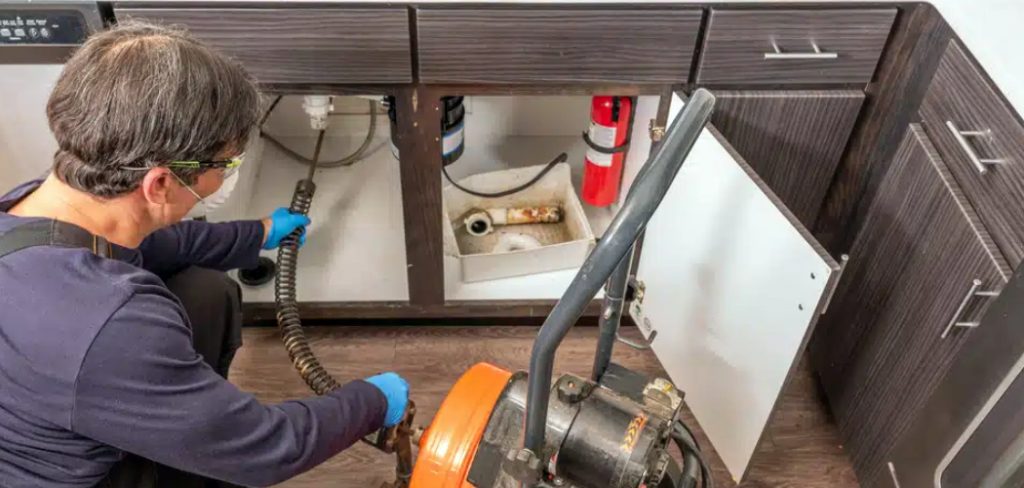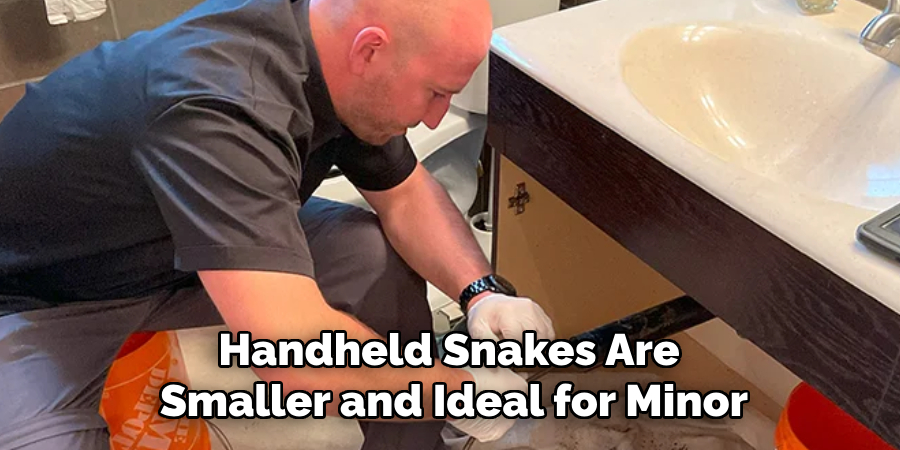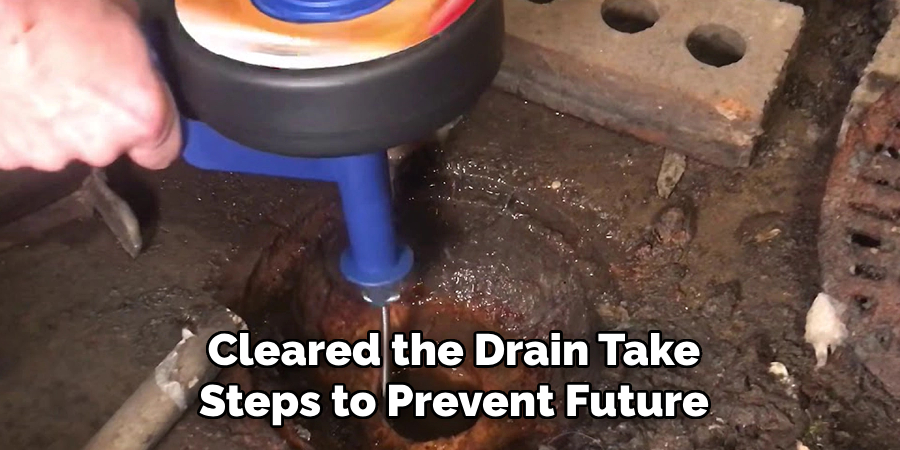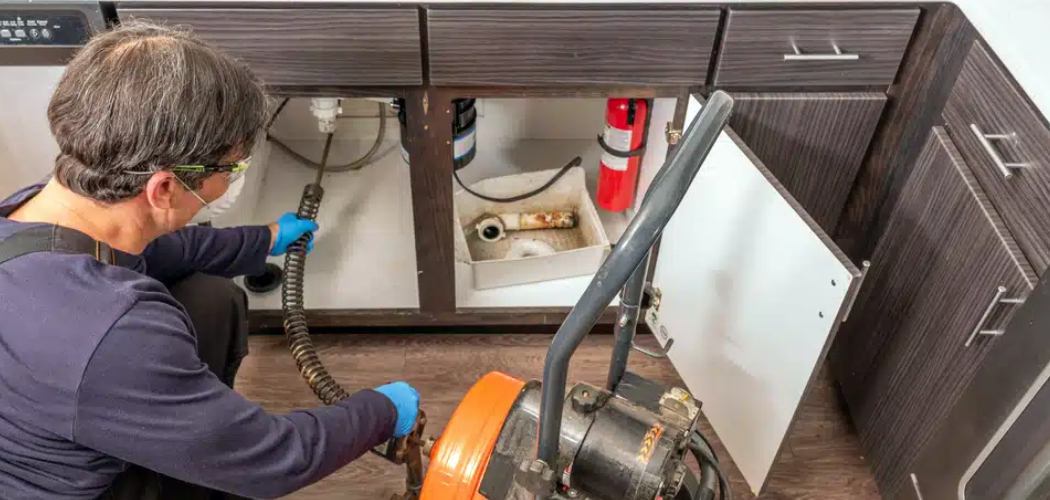Clogged drains can be a common household issue, and one of the most effective tools to address this problem is a drain snake. A drain snake, also known as a plumbing auger, is designed to reach into pipes and remove blockages that are causing slow or backed-up drains. This guide will walk you through the proper steps of how to use a drain snake, helping you restore the functionality of your plumbing without the need for professional assistance.

Types of Drain Snakes and Their Uses
There are several types of drain snakes available, each suited for different types of clogs and plumbing systems. Understanding the various options will help you choose the right tool for the job:
Handheld Drain Snake
This is a versatile and commonly used tool for minor clogs in sinks, bathtubs, and showers. It consists of a coiled metal wire attached to a handle that allows you to manually rotate and guide it through the drain to dislodge blockages.
Toilet Auger
Specifically designed for toilets, the toilet auger features a rigid, curved design to protect the porcelain while reaching deep into the toilet’s trap to remove tough clogs. It’s an essential tool for addressing toilet-specific issues.
Powered Drain Snake
Also known as an electric drain snake, this tool is ideal for more stubborn clogs within longer plumbing systems. It uses a motor to drive the cable, which provides greater power and reach than a manual snake. It’s particularly useful for professionals or for tackling severe blockages.
Flat Tape Drain Snake
Best for clearing clogs in smaller pipes, the flat tape drain snake features a thin, flat cable that is suited for narrow or shallow drains, such as those found in bathroom sinks. Its design makes it easy to maneuver in confined spaces.
Mini-Rooter or Drum Auger
This heavy-duty type of snake is used for larger plumbing systems, often employed to clear clogs in main sewer lines or outdoor pipes. It can handle tree roots and other significant obstructions, making it a powerful option for major clogs.
10 Methods How to Use a Drain Snake
1. Understand the Different Types of Drain Snakes

Before you begin using a drain snake, it’s important to understand the different types available. There are two main types: the handheld drain snake and the motorized drain auger. Handheld snakes are smaller and ideal for minor clogs in sinks, showers, or tubs, and they are operated manually.
Motorized augers, on the other hand, are designed for larger, more stubborn clogs in main sewer lines or deep drains and are powered by electricity or batteries. Choose the right snake based on the severity of the clog and the type of drain you are working with. Having the correct tool will make the task easier and more efficient.
2. Gather Necessary Safety Equipment
Using a drain snake can sometimes be a messy task, so it’s essential to wear the proper safety equipment before beginning. Start by putting on rubber gloves to protect your hands from any debris or bacteria that may be lurking in the drain. You should also wear safety glasses to protect your eyes, especially if you are working with a motorized auger, which can cause debris to fly.
Keep a towel or rag handy to clean up any water that may spill out of the drain during the process. By taking these precautions, you can minimize your risk of injury or contamination while handling the snake.
3. Remove Any Drain Cover or Stopper

Before you can access the drain and use the snake, you need to remove any covers or stoppers that may be in place. In sinks, tubs, or showers, you’ll typically encounter a drain cover or a stopper that prevents debris from entering the drain. Use a screwdriver to remove the cover or stopper if necessary. In some cases, you may need to unscrew or pull out the stopper, which might involve lifting a lever or twisting it. Once the cover is removed, you’ll be able to see the drain opening clearly, allowing you to insert the snake.
4. Insert the Snake Into the Drain
Once the drain cover or stopper is out of the way, take the end of the drain snake and slowly begin to feed it into the drain opening. If you’re using a manual drain snake, rotate the handle as you push the snake further into the drain. The goal is to guide the snake through the pipe until you feel resistance, which indicates that you’ve encountered the clog. If you’re using a motorized auger, switch on the motor and gently guide the snake into the drain, ensuring that it moves steadily and doesn’t get stuck.
Be patient during this step, as it may take a bit of time to push the snake through the length of the pipe, depending on the size and location of the clog.
5. Rotate the Snake to Break Through the Clog
When you feel resistance, it’s time to start rotating the drain snake. The turning motion is what helps break through the clog, allowing the snake to dig into the blockage and dislodge it. If you’re using a handheld snake, turn the handle clockwise while maintaining gentle pressure. For motorized augers, the machine will automatically rotate the snake for you. In either case, rotate the snake in both directions, slowly moving the snake back and forth to ensure the clog is thoroughly broken apart. I
f the snake seems to hit a hard blockage and cannot move further, reverse the direction for a few seconds and try again.
6. Pull the Snake Back and Remove Debris

After the snake has broken through the clog, slowly begin to pull it back out of the drain. As you retract the snake, you may encounter pieces of the blockage that have been loosened. Be prepared for some debris, like hair, grease, or other materials, to come up with the snake. Keep a bucket or a towel nearby to catch any debris that falls out of the drain.
Once the snake is completely out, inspect it for any stubborn clogs that might still be attached. If needed, repeat the process of feeding the snake back into the drain and rotating it to break up any remaining blockage.
7. Test the Drain for Proper Flow
After you’ve successfully removed the clog with the drain snake, it’s essential to test the drain to ensure it’s functioning properly. Turn on the faucet or shower and let the water run for a few minutes to see if it flows freely down the drain. If the water drains quickly without any issues, this indicates that the clog has been cleared. If the drain is still slow or partially blocked, you may need to re-insert the snake and repeat the process until the clog is fully removed. In some cases, you might need to use a combination of techniques, such as using a plunger or hot water, along with the snake.
8. Clean and Maintain the Drain Snake
After using the drain snake, it’s crucial to clean it properly before storing it away. If you’ve used a handheld snake, remove any debris that may be stuck to the coils. Wash it with warm, soapy water to remove grease or residue, and dry it thoroughly to prevent rust. For motorized augers, follow the manufacturer’s instructions for cleaning and maintenance, as motorized tools may require more attention and care. Regular maintenance will ensure that your drain snake remains in good working condition for future use, allowing you to address clogs quickly and efficiently.
9. Prevent Future Clogs

Now that you’ve successfully cleared the drain, take steps to prevent future clogs from forming. One of the best ways to keep drains clear is to be mindful of what goes down them. Avoid pouring grease, oils, or food scraps down the kitchen sink, and use drain covers to catch hair and debris in bathrooms. Regularly clean drains by pouring boiling water down them once a month to break up grease or soap scum buildup. You can also use natural cleaners, like baking soda and vinegar, to maintain flow and prevent blockages. By being proactive, you can extend the life of your drains and reduce the need for frequent use of a drain snake.
10. Know When to Call a Professional
While a drain snake can be incredibly effective for many common clogs, there are instances where a professional plumber may be necessary. If the clog is located deep in the plumbing system, such as in the main sewer line, or if the snake does not seem to resolve the issue after several attempts, it may indicate a more serious problem that requires professional attention. Persistent clogs could be caused by issues like tree roots invading the pipes, damaged plumbing, or buildup that requires advanced equipment.
Conclusion
A drain snake is an invaluable tool for tackling clogged drains, providing a reliable and eco-friendly solution to common plumbing problems. By following these ten methods—understanding the type of snake, preparing the drain, using the snake correctly, and maintaining the tool—you can efficiently clear blockages and keep your drains flowing smoothly. Thanks for reading our blog post on how to use a drain snake! We hope you found it helpful and informative.
You Can Also Check It Out To a Central Ac Unit

